Less is More with Gyroscopes
A new generation of fiber optic gyroscopes is taking the accuracy of inertial navigation systems higher and the payload lower.
A fiber optic gyroscope (FOG) can now weigh less than three kilograms, less than two kilograms even, and be less than 200mm in diameter.
As their host AUVs themselves shrink, FOGs are following suit, and as the AUVs go deeper and perform a wider range of data collection tasks, FOGs continue to be part of the GNSS-denied navigational systems that enable them to do it.
The FOG sensors in an inertial navigation system measure changes in orientation of the AUV to support navigation by dead reckoning as satellite systems such as GPS are not available subsea. FOGs operate by monitoring the difference in propagation time between beams of light traveling in clockwise and counterclockwise directions about a closed optical path. Two beams of light are sent in opposite directions in a fiber optic coil. As the vehicle rotates, the beam travelling against the rotation experiences a slightly shorter path delay than the other beam, a phenomenon called the Sagnac effect. The difference in phase shift between the two beams is used to estimate the rate of rotation. In an inertial navigation system, there will be three FOGs, each aligned orthogonally and combined with accelerometers to provide the sensed acceleration and rotation across six degrees of freedom.
The goal of minimizing size, weight, power and cost (SWaP-C) is driving much of the innovation underway with these systems.
Earlier this year, Exail released a new highly birefringent fiber for military-grade FOGs, featuring what it claims is the highest birefringence and shortest beat length available in the industry (1mm at 633 nm). The inertial measurement unit including fiber coil is now less than 30mm in diameter, and the material enhancements maximize the length of fiber that can be used, thereby maximizing accuracy, whilst ensuring the mechanical reliability of the coils. This fiber is available with a standard 80µm cladding but also with a smaller cladding of only 60µm for even smaller footprint gyros.
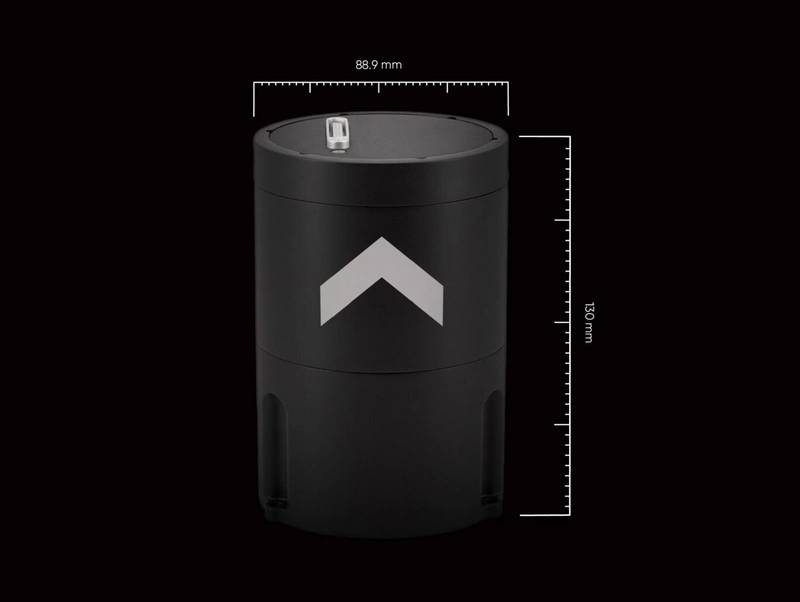 Exail’s Phins 9 Compact weighs 1.2kg and features a power consumption of less than 7W.
Exail’s Phins 9 Compact weighs 1.2kg and features a power consumption of less than 7W.
Image courtesy Exail
Maxime Le Roy, Subsea Inertial Navigation Systems Product Manager at Exail, says the market is moving to smaller AUVs that are versatile, powerful and agnostic to any situation. Exail sold the first of its latest model, Phins 9 Compact, to Bedrock for a new modular AUV designed for swift deployment in geophysical surveys and monitoring. Equipped with multibeam echosounder, side scan sonar and magnetometer, the AUV boasts a 300m depth rating and 12-hour endurance surveying at three knots with all systems operational.The Phins 9 Compact adds just 1.2kg to the payload and features a power consumption of less than 7W. It has a Doppler Velocity Logger-aided position accuracy of heading accuracy of 0.07° and pitch and roll accuracy of 0.01°. “The Phins 9 Compact is an ideal solution for new generation AUV manufacturers and e-ROV operators looking to save power without compromising on data processing capabilities,” says Le Roy. Its applications include survey-grade coastal and offshore seabed mapping, inspection repair and maintenance and defense.
The latest models added to Advanced Navigation’s DFOG range are the Boreas A Series, including A90 and A70. The A Series is designed for surveying, mapping and navigation across subsea, marine, land and air applications. Both of the new models are strategic-grade inertial measurement units (IMU) that contain ultra-high accuracy DFOG and high performance closed-loop accelerometers.
All the measurements are combined into a proprietary neural network algorithm which removes sensor errors and filters out interference. Advanced Navigation’s sensor fusion algorithm is more sophisticated than Kalman filters. Kalman filtering provides estimates for unknown variables that are primarily statistics-based. The sensor fusion approach is more accurate at determining and removing sensor errors, which results in a higher performance navigation solution.
The technologies that have been developed for the DFOG include digital modulation techniques that allow in-run variable errors in the coil to be measured and removed from the measurements. The “learning” capabilities of the AI enable it to accumulate sensor error data and associated conditions during erroneous measurements and post-measurement corrections. The AI can then use this accumulated knowledge and apply sensor error offsets that are tailored to the prevailing conditions. This allows for a smaller FOG with reduced coil length that can achieve the accuracy of one with a longer coil.
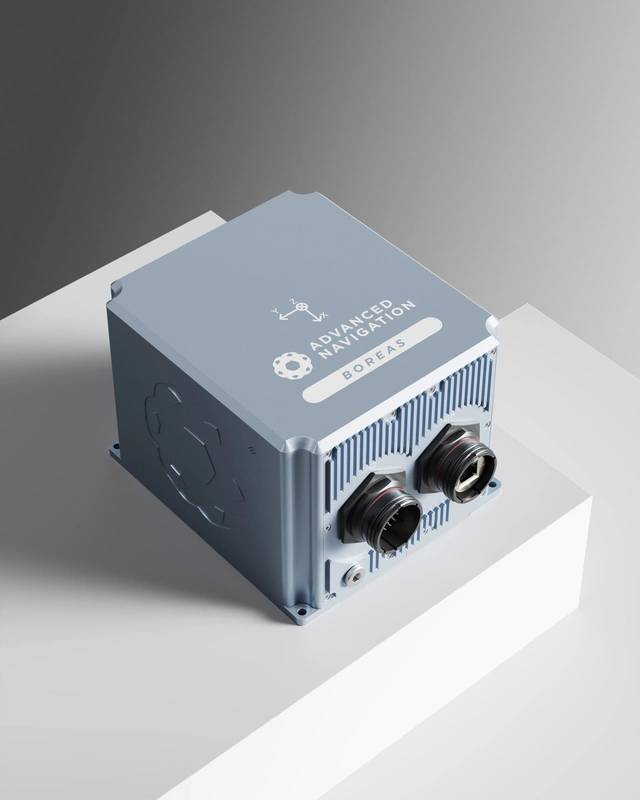 The Advanced Navigation Boreas A Series is designed for surveying, mapping and navigation across subsea, marine, land and air applications.
The Advanced Navigation Boreas A Series is designed for surveying, mapping and navigation across subsea, marine, land and air applications.
Image courtesy Advanced Navigation
“The coil lengths in our Boreas DFOG systems range from 300m on the smallest systems to 5km for the ultra-high accuracy systems. The most popular unit we sell currently is based on 1,000m coil length. The coils are very precisely wound by specially designed robots at our high-tech manufacturing facility in Sydney, using the quadrupole winding method,” says Xavier Orr, CEO and co-founder of Advanced Navigation.
Additionally, an optical chip is used to integrate the sensitive components into a single chip, thus removing all the fiber splices and reducing SWaP while increasing reliability and performance. “The Boreas DFOG technology has a custom-made optical or photonic chip at its heart, which replaces what would typically be five individual components and gives us significant advantages of improved performance with reduced SWaP consumption. In addition, it allows us to be more tolerant to shock and vibration as well as offering improved mean time before failure and reliability.”
Orr says that the widespread use of GNSS jamming and spoofing technologies means defense organizations are moving away from GNSS-only solutions and adopting inertial navigation systems solutions that can provide the necessary precision. An inertial navigation system, as well as operating in GNSS-denied environments, updates at a higher rate than GNSS. “An inertial navigation system can output data much faster as well as provide orientation, roll, pitch and heading data which the GNSS system is incapable of achieving.”
He says the next frontier for FOG technology will involve integrating the various components of a FOG into a planar photonic chip rather than a printed circuit board. “This means the FOG system’s SWaP-C will be significantly reduced, enabling manufacturing simplicity and commercial viability across the mass market.”




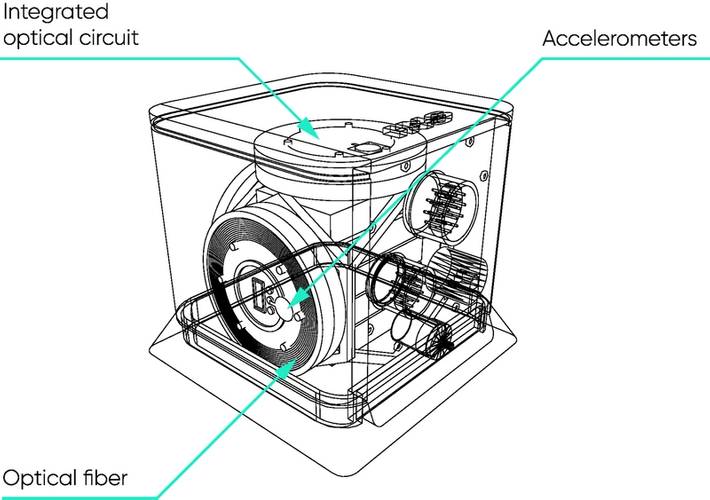




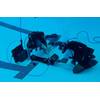
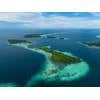








 August 2025
August 2025



